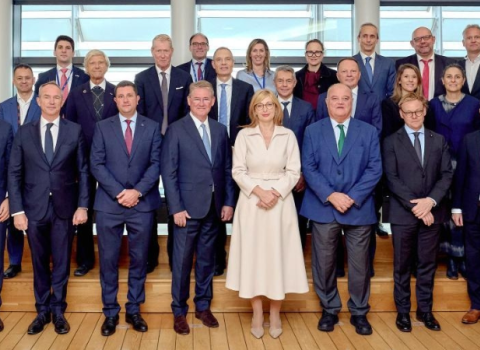The Deutsche Forschungsgemeinschaft (DFG, German Research Foundation) is to establish eleven new Collaborative Research Centres (CRC) at the start of next year, putting up initial funding of €94.4 million for the first four years.
The centres will cover a wide range of research areas, from systems for low-noise commercial aircraft and new methods for analysing and filtering information from large datasets, to astrophysics, immunology and cellular biology.
One of the new projects is a CRC/Transregio to be carried out across several research locations.
In addition, the DFG’s grants committee agreed to extend the funding period for 15 existing CRCs for a further four years. This means that as of January 2011, the DFG will be funding a total of 238 Collaborative Research Centres.
Examples of new CRCs include CRC 910, in “Control of self-organising non-linear systems: theoretical methods and application of concepts.” In dynamic systems in physics, chemistry and biology, temporal, spatial or spatio-temporal structures often form spontaneously and are far from being in thermodynamic equilibrium and CRC 910 plans to explore and control the self-organisation of these structures. To do so, new control concepts and methods are to be developed and applied to selected systems. The researchers intend to merge different control concepts from the field of non-linear dynamics and chaos control, classical control and optimisation theory and quantum control. The focal points are semiconductor quantum structures, soft matter and neural systems.
The host institution for CRC 910 is the Berlin Institute of Technology, where researchers led by Eckehard Schöll will collaborate with counterparts at the Free University of Berlin, Humboldt University of Berlin; Fritz Haber Institute of the Max Planck Society; Federal Institute of Physics and Technology and the Weierstrass Institute for Applied Analysis and Stochastics, all in Berlin.
Meanwhile, CRC 880 in the “Fundamentals of high-lift for future commercial aircraft,” aims to providing the scientific basis for a new kind of civil, low-noise aircraft. These are to be powered by new, efficient high-lift systems that can not only reduce noise, but also allow take-off and landing on short runways. The new CRC intends to increase the efficiency of the active high-lift system, particularly by reducing the power required for blowing out air over the high-lift flaps. Through introduction of an aerofoil that can vary its shape, the exploration of the synergies between suction and blow-off in a high-lift system and the exploitation of the potential for flow control, lift coefficients of up to twice the values common today are believed to be possible.
The project will be based at the Technical University of Brunswick, coordinator, coordinated by Rolf Radespiel, with colleagues at the University of Hannover and the German Aerospace Centre in Brunswick.





 A unique international forum for public research organisations and companies to connect their external engagement with strategic interests around their R&D system.
A unique international forum for public research organisations and companies to connect their external engagement with strategic interests around their R&D system.